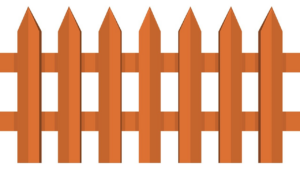 Boundaries take many forms, shapes, and sizes. They can delineate property lines, be a rope telling me where I can or can’t safely ski or the “stay out” sign found on our childhood bedroom door. Some people are happy with their boundaries, others struggle with identifying and upholding them, especially when it involves other people. Why are they so complex? Let’s dive in and start learning about them!
Boundaries take many forms, shapes, and sizes. They can delineate property lines, be a rope telling me where I can or can’t safely ski or the “stay out” sign found on our childhood bedroom door. Some people are happy with their boundaries, others struggle with identifying and upholding them, especially when it involves other people. Why are they so complex? Let’s dive in and start learning about them!
First, we need to identify – what are boundaries? As a therapist, I like to think of boundaries as:
- Things that are intended to keep me physically, emotionally, and intellectually safe
- Help me stay organized in my daily responsibilities and financial choices
- Ultimately boundaries denote where I psychologically end and you begin.
What types of boundaries are out there?
You can look at many sources citing a multitude of boundaries. I like to focus on those put forth by Positive Psychology. I think these 7 types of boundaries create a well-rounded view of ways to evaluate your overall safety, organization and psychological wellbeing.
- Mental: Freedom to have your own thoughts, values, and opinions.
- Emotional: How emotionally available you are to others.
- Material: Monetary decisions, giving to lending to others.
- Internal: Self-regulation, energy expended on self vs others.
- Conversational: Topics that you do and do not feel comfortable discussion.
- Physical: Privacy, personal space, your body.
- Time: How much time you spend with someone or doing something
Next, let’s identify how boundaries are formed?
- Think about an influential person in your life. They may have been a positive role model or impacted you by showing what not to do. Either way, they left an impression on you and what is or isn’t okay, comfortable, and acceptable.
- Think of how past experiences have impacted your boundaries. You may go to extreme lengths to keep yourself safe (and later feel frustrated or lonely) or be confused about where that line lays (and later feel hurt or victimized).
- Having a hard time figuring it out or know it’s trauma-based? May be time to explore with a therapist…
- What values were important in your childhood? What has continued into adulthood? Why?
- Emotions play a role in boundary formation, too. Think of the last time you felt badly about something, and how that changed future interactions or activities. For example, you may have felt taken advantage of, so the next time the event happened you had a very strict “no” policy.
 Once you’ve identified your boundaries and where they come from, the next step involves evaluating them to decide if they are “healthy or unhealthy, too rigid or too flexible.” The only person to really know that answer is you! Changing boundaries is a multi-step process and looks different for everyone. Boundary types (physical vs emotional, for ex) also take different steps to change.
Once you’ve identified your boundaries and where they come from, the next step involves evaluating them to decide if they are “healthy or unhealthy, too rigid or too flexible.” The only person to really know that answer is you! Changing boundaries is a multi-step process and looks different for everyone. Boundary types (physical vs emotional, for ex) also take different steps to change.
Note: If you would like to set up a time for your team/community to participate in an interactive presentation on setting boundaries, please contact Kirsten directly at Kirsten.wulfsberg@colostate.edu

